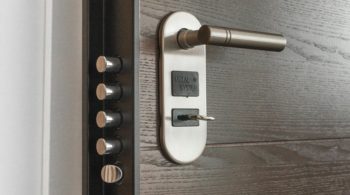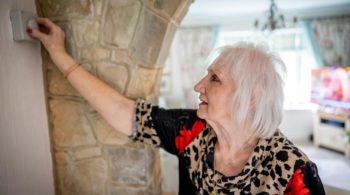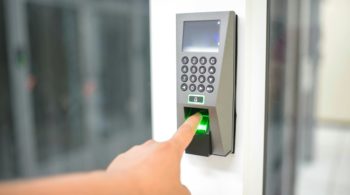You can build a smart home panel by combining ESPHome with Home Assistant, giving you control over sensors and devices from a single interface. Start by installing the ESPHome add-on in Home Assistant and configuring your ESP32 device with the right settings. After flashing the firmware and connecting it to your network, you’ll be ready to customize features and automate tasks. Understanding these initial steps is key before moving on to managing and integrating your devices effectively.
Understanding ESPHome and Its Capabilities
Although setting up a smart home system may seem complex, ESPHome simplifies the process by allowing you to create custom firmware configurations for your microcontrollers using easy-to-edit YAML files.
ESPHome features an intuitive Device Builder web UI that helps you define hardware components like sensors and switches without deep programming skills. This customization lets you tailor smart home integration precisely to your needs.
Once connected to Wi-Fi, your devices are automatically discovered by Home Assistant, making setup smoother. You can add GPIO switches and binary sensors to monitor and control various home automation tasks effectively.
Installing the ESPHome Dashboard in Home Assistant
To get started with the ESPHome Dashboard in Home Assistant, you’ll first need to install it from the add-on page by clicking the INSTALL button.
After the ESPHome installation completes, click Start, then Open Web UI to launch the Dashboard. The Dashboard setup will appear in your sidebar as an empty panel, ready for device configuration.
If you don’t have access to add-ons, you can run ESPHome in a Docker container instead. Remember to enter your Wi-Fi credentials during setup so your devices connect smoothly with Home Assistant.
This completes your ESPHome Dashboard installation.
Setting Up Your ESP32 Device for Smart Home Integration
Start by connecting your ESP32 device to your computer using a USB cable that supports data transfer, making sure it’s detected by the ESPHome dashboard.
Then, click the green “Add” button to begin setup, name your device, and choose the correct USB to UART bridge controller.
Hold down the ESP32’s boot button during installation, release it once the process starts, and finally, power the device to enable Wi-Fi for further configuration.
Connecting ESP32 to Computer
When you connect your ESP32 to the computer using a USB cable that supports data transfer, it establishes the necessary communication for configuration and integration.
Begin by selecting the correct USB connection in your ESPHome dashboard, then click the green “Add” button to name your device for easy recognition. Choose the appropriate UART bridge controller to enable communication between your computer and ESP32.
During setup, hold the ESP32’s boot button until the dashboard signals readiness, then release it. If your device appears offline afterward, try setting the IP manually or re-flashing via USB to restore connection.
Flashing Firmware With ESPHOME
Although flashing firmware on your ESP32 might seem technical at first, the ESPHome dashboard simplifies the process by guiding you step-by-step.
Start by connecting your ESP32 via a USB cable that supports data transfer, then select the correct USB to UART bridge controller in the setup. Hold the boot button while preparing installation, releasing it when ready.
If your device appears offline, manually set its IP address or re-flash using these flashing techniques. After successful installation, power your ESP32 via cable to enable Wi-Fi updates.
Keep a copy of your API Key for firmware troubleshooting or manual Home Assistant integration.
Flashing Firmware to Your ESP32 Device
First, connect your ESP32 to your computer with a USB cable that supports data transfer, making sure it’s recognized properly.
Then, use the ESPHome dashboard to add your device and select the correct USB to UART bridge controller to establish a connection.
Finally, hold the boot button on the ESP32 during the installation process as prompted to successfully flash the firmware.
Preparing ESP32 for Flashing
Before you begin flashing your ESP32, make sure to connect it to your computer using a USB cable that supports data transfer to guarantee a stable connection.
In the ESPHome dashboard, add a new device, name it, and select the correct USB to UART bridge controller, ensuring device compatibility.
Hold down the ESP32’s boot button until the dashboard signals readiness, then release it. This step helps avoid common flashing challenges.
If your ESP32 appears offline after flashing, set its IP manually and try reinstalling the firmware.
Proper preparation guarantees a smooth start for your smart home panel project.
Installing Firmware via USB
Several key steps guarantee you successfully flash firmware to your ESP32 device via USB.
First, connect your ESP32 to your computer with a USB cable that supports data transfer.
In the ESPHome dashboard, add a new device, name it, and select the correct USB to UART bridge controller.
Hold down the ESP32’s boot button until the dashboard signals readiness, then release it to start the installation.
If the device appears offline afterward, manually set its IP and re-flash via USB.
Once installed, power your ESP32 with a cable to enable wireless firmware updates in the future.
Customizing Device Features With ESPHOME Configuration
When you customize device features using ESPHome configuration files, you define attributes like sensors, switches, and binary sensors in a clear YAML format.
This YAML customization lets you specify device attributes such as GPIO switches by assigning pin numbers and names within the configuration file.
These ESPHome features enable smart device integration, allowing you to control connected devices like lights or fans easily.
By enhancing features in your configuration file, you activate automation capabilities within Home Assistant.
Remember to save your changes after adjustments to guarantee your smart home panel reflects your desired customizations effectively.
Managing and Updating Your ESPHome Devices
Anyone managing ESPHome devices needs to stay on top of updates and configurations to keep their smart home running smoothly.
Use the ESPHome Device Builder interface for effective device management and firmware updates. Regularly check logs to monitor device performance and troubleshoot problems.
Always save changes after editing YAML configurations before flashing your devices. Keep devices online by confirming correct IP addresses and power status.
Remember to use the overflow menu to validate configurations, clean builds, and remove old entries. This approach guarantees your smart home panel remains reliable and up-to-date.
- Update firmware through the device list
- Monitor device logs frequently
- Validate and clean configurations regularly
Integrating ESPHOME Devices With Home Assistant
After managing and updating your ESPHome devices, the next step is to connect them with Home Assistant for centralized control.
Once your device joins Wi-Fi, Home Assistant automatically discovers it, streamlining setup. If needed, you can manually add devices using their host name or IP address on the Integrations page.
Configuring features like switches and sensors in YAML lets Home Assistant integrate these components fully. This integration facilitates automation benefits, allowing you to control lights or monitor sensors directly through Home Assistant.
Using the ESPHome Device Builder’s web UI simplifies managing configurations, firmware, and logs, enhancing your overall smart home panel experience.
Frequently Asked Questions
Can ESPHOME Work With Microcontrollers Other Than ESP32?
Yes, ESPHome supports microcontroller compatibility beyond ESP32, but it’s mainly designed for ESP8266 and ESP32. Alternative microcontrollers may require custom firmware or lack full feature support, so you’ll want to check compatibility before choosing one.
What Are the Power Requirements for an ESPHOME Smart Home Panel?
You’ll need to provide stable voltage requirements, typically 3.3V or 5V, depending on your microcontroller. Power consumption varies but generally stays low, around 70-250mA, ensuring efficient operation for your ESPHome smart home panel.
How Do I Secure My ESPHOME Devices From Unauthorized Access?
You should enable authentication methods like password protection and use secure network security practices such as WPA3 Wi-Fi, firewalls, and VPNs to prevent unauthorized access to your ESPHome devices and keep your smart home safe.
Can I Use ESPHOME With Voice Assistants Like Alexa or Google Home?
Yes, you can use ESPHome for voice integration with smart assistants like Alexa or Google Home. You’ll need to configure Home Assistant to bridge ESPHome devices, enabling seamless control through your preferred smart assistant.
Is It Possible to Backup My ESPHOME Configuration and Settings?
Yes, you can backup your ESPHome configuration and settings using configuration export. You’ll find several backup methods, like saving YAML files locally or using version control, ensuring your smart home setup stays safe and easy to restore.
Christina Pulluck helped bring Nebula Electronics from a a science and tech decision forum to a full-fledged news site by creating a new design and branding. She continues to assist in keeping the site responsive and well organized for the readers. As a contributor to Nebula Electronics, Christina mainly covers mobile news and gadgets.







